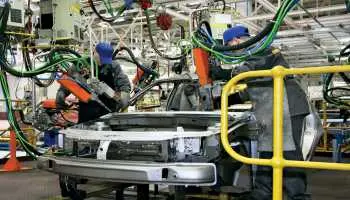
Autonomous Cranes Market Trends, Revenue, Scope, Growth Drivers, Key Manufacturers, Opportunities and Future Competition Till 2033: SPER Market Research
Category :
Equipment and Machinery
Published: Jul-2023
Author: SPER Analysis Team
Autonomous Cranes Market Trends, Revenue, Scope, Growth Drivers, Key Manufacturers, Opportunities and Future Competition Till 2033: SPER Market Research
Global Autonomous Cranes Market is projected to be worth USD 47.64 billion by 2033 and is anticipated to surge at a CAGR of 24.92%.
Autonomous cranes are advanced machines specifically designed to carry out lifting and transportation tasks without direct human involvement. These cranes are equipped with a range of sophisticated sensors, cameras, and computerised control systems that enable them to operate autonomously and make informed decisions based on algorithms and real-time data. One of the key advantages of autonomous cranes is their ability to navigate and manoeuvre with precision and efficiency, even in challenging environments. They can analyse the terrain, detect potential hazards, and select the optimal path to complete tasks safely and effectively. Laser scanners, radar systems, and cameras are among the sensors employed in autonomous cranes, providing them with a comprehensive understanding of their surroundings.
Global Autonomous Cranes Market Driving Factors and Challenges
The Global Autonomous Cranes Market is driven by several key factors that contribute to its growth and expansion. First off, the demand for automated crane solutions is anticipated to be driven by the increase in construction and renovation activities. Several stakeholders, including experts in infrastructure development, governmental agencies, and service providers for heavy equipment, are looking for increased operational effectiveness and safety precautions. This rise in demand can be attributed to the growing understanding of the advantages automated cranes provide in satisfying these needs. Additionally, the market for autonomous cranes is expanding due to demands for efficiency and safety. The market is driven by the increase in demand for goods and materials, which calls for swift and effective movement in addition to the need to reduce accidents. The need to streamline operations and ensure efficient and effective handling of materials while putting a priority on worker and asset safety is what drives the market's expansion.
Request For Free Sample Report @ https://www.sperresearch.com/report-store/autonomous-cranes-market.aspx?sample=1
There are a variety of challenges that the Global Autonomous Cranes Market must overcome before it can expand and become widely used. The expensive initial investment required for autonomous crane technology is one major obstacle. Some businesses, especially small and medium-sized ones, find it difficult to adopt autonomous cranes because doing so requires significantly investing in cutting-edge sensors, cameras, and control systems. Another challenge is requirement for qualified operators to operate and maintain autonomous cranes presents another difficulty. These complex machines require technical know-how and specialised training, which might not be widely available in all areas or among all workforce demographics. The adoption of autonomous cranes may be slowed down and their use on construction sites may be restricted by a lack of qualified operators.
Impact of COVID-19 on Global Autonomous Cranes Market
The global market for autonomous cranes was significantly impacted by the COVID-19 pandemic. One of the major outcomes was the slowdown in infrastructure and building projects as a result of social isolation policies and lockdowns implemented by many nations. Construction work was stopped or put off as a result, which had an immediate impact on the use of autonomous cranes. During this time, the demand for construction equipment significantly decreased. The economic uncertainty also resulted in lower investments in significant infrastructure projects, which further hampered the market for autonomous cranes' growth prospects.
Global Autonomous Cranes Market Key Players:
The market study provides market data by competitive landscape, revenue analysis, market segments and detailed analysis of key market players such as; AIDrivers Ltd, Cargotec Corporation, Columbus McKinnon, INTSITE Ltd., Komatsu Ltd., Konecranes Plc, Schneider Electric, SMIE, Syracuse, VOCA.
For More Information about this Report @ https://www.sperresearch.com/report-store/autonomous-cranes-market.aspx
Global Autonomous Cranes Market Segmentation:
By Mobility: Based on the Mobility, Global Autonomous Cranes Market is segmented as; Mobile, Static.
By Business Type: Based on the Business Type, Global Autonomous Cranes Market is segmented as; Aftermarket, OEM.
By End-User: Based on the End-User, Global Autonomous Cranes Market is segmented as; Building & Construction, Marine & Offshore, Mining & Excavation.
By Region: This report also provides the data for key regional segments of Asia-Pacific, Europe, Middle East and Africa, North America, Latin America.
This study also encompasses various drivers and restraining factors of this market for the forecast period. Various growth opportunities are also discussed in the report.
Would you like to view the sample pages?
Get Sample PagesExplore Related Reports
Domains Served
Our Global Clients
Our data-driven insights have influenced the strategy of 200+ reputed companies across the globe.




































